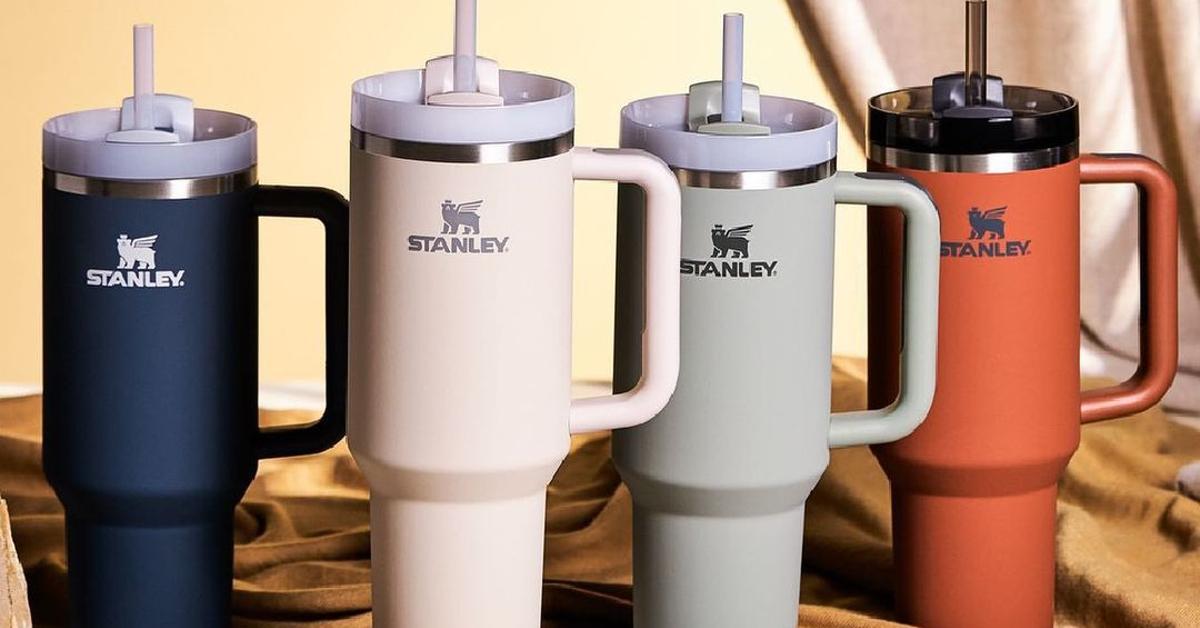The Stanley Cup Craze Has Gotten Out of Hand — What It Says About Waste, Consumption, and Status
Published Jan. 2 2024, 5:18 p.m. ET

The University of Cambridge describes collecting as a "ubiquitous human activity." It connects thingamabobs to "the human world of ideas" and has gone on for, well, ever. Archaeologists have even found collections of little shells and chunks of iron pyrite in caves dating back 40,000 years, as per The New York Times.
Much more recently however, people have collected things like stamps, rare baseball cards, Beanie Babies, and Stanley cups. Despite the expensive price of these popular cups, there are influencers out there with collections made up of dozens of them.
Reusable water bottles, too, experience trends. Once mainstream Western culture was done with YETIs and Hydro Flasks, shopaholics moved on to the Stanley stainless steel tumblers, fueling a cult-like craze that spawned bizarre personal collections and Black Friday-like stampedes. The obsession with the Stanley cups says something profound about overconsumption, objects as status symbols, and the rejection of the brand's "built for life" message.

Stanley's 40-ounce tumblers have been at the center of a wasteful craze since 2022.
Inventor William Stanley Jr. founded Stanley in 1913 after combining vacuum insulation with steel, creating an innovative bottle that kept hot drinks hot. Over 110 years later, Stanley products are known for "keeping your warms warm and your colds cold."
The company's entire premise surrounds sustainability, as Stanley's reusable products are intended to last a lifetime, "reducing demand for disposable products that end up in waste and water streams" in the process.
For context, about 80 percent of plastic water bottles eventually pile up in landfills. And according to Healthy Human, "it takes up to 1,000 years for every single bottle to decompose."
With adventure and sustainability at its core, Stanley hopes its tough bottles will never see a landfill. That's a nice thought, but the company surely never expected people to collect and display Stanley water bottles like they're Pokémon cards. The 2020s Stanley craze has made the company a $750 million business, as per CNBC.
While there are certainly many eco-conscious babes and granola lifestyle lovers who've purchased a Stanley Quencher for practical purposes, these reusable cups have also become trendy accessories. Popular among influencers, Stanley cups are like the "it girl" of reusable water bottles; anyone who's anyone has one!
Some TikTokers have even posted videos showing their extensive Stanley collections, composed of more cups than they could ever possibly need. Obviously, this is uber-wasteful.
That being said, it's important to note that Stanley is constantly releasing limited edition colors and designs, which fuels the hype and needless repurchasing of bottles.
A video showcasing Target customers racing to snag cups from Stanley's 2024 Valentine's Day collection has gone viral.
Just like Black Friday deals of the past have turned bargain shoppers into vicious animals, an exclusive collection of various red and pink Stanley cups sold out within minutes at many Target locations. Released on Dec. 31, 2023, several Targets posted signs on the Stanley displays, enforcing a two per guest limit.
As seen in a TikTok video posted by user Victoria Robino, this rule was not followed.
Despite leaking issues and rumors of lead, Stanley cups continue to fly off shelves, and many green influencers and content creators have spoken out about implications of overconsumption.
"Despite the fact that these bottles can be crazy expensive, the part that bothers me is that water bottles like this come and go as trends," a 2023 LiveKindly TikTok video states. "If you have [a reusable water bottle] that's in usable condition, just use that, because this Stanley cup trend will inevitably pass."
And aside from the ironic wastefulness of Stanley cup collecting, TikTok user @resumeofficial made an interesting point about the current state of capitalism.
Speaking about the obsession with Ugg boots, Drunk Elephant products, and Stanley cups, the TikToker, Morgan, did some research and came across the term "conspicuous consumption."
In a nutshell, the term refers to spending money to "keep up with the Joneses."
"It's one thing when it's the upper class who has a lot of disposable income doing this, but now it's also the middle class falling victim to this with 40 percent of people spending on these status symbols just to impress others," Morgan says in a Dec. 2023 video.
All in all, before you spend your hard-earned money on a Stanley tumbler, think about why you want one. And if your 10-year-old YETI is scratched and decorated with stickers that you now consider cringe-worthy (perhaps of mustaches), just do your cabinets and the planet a favor and continue using her!